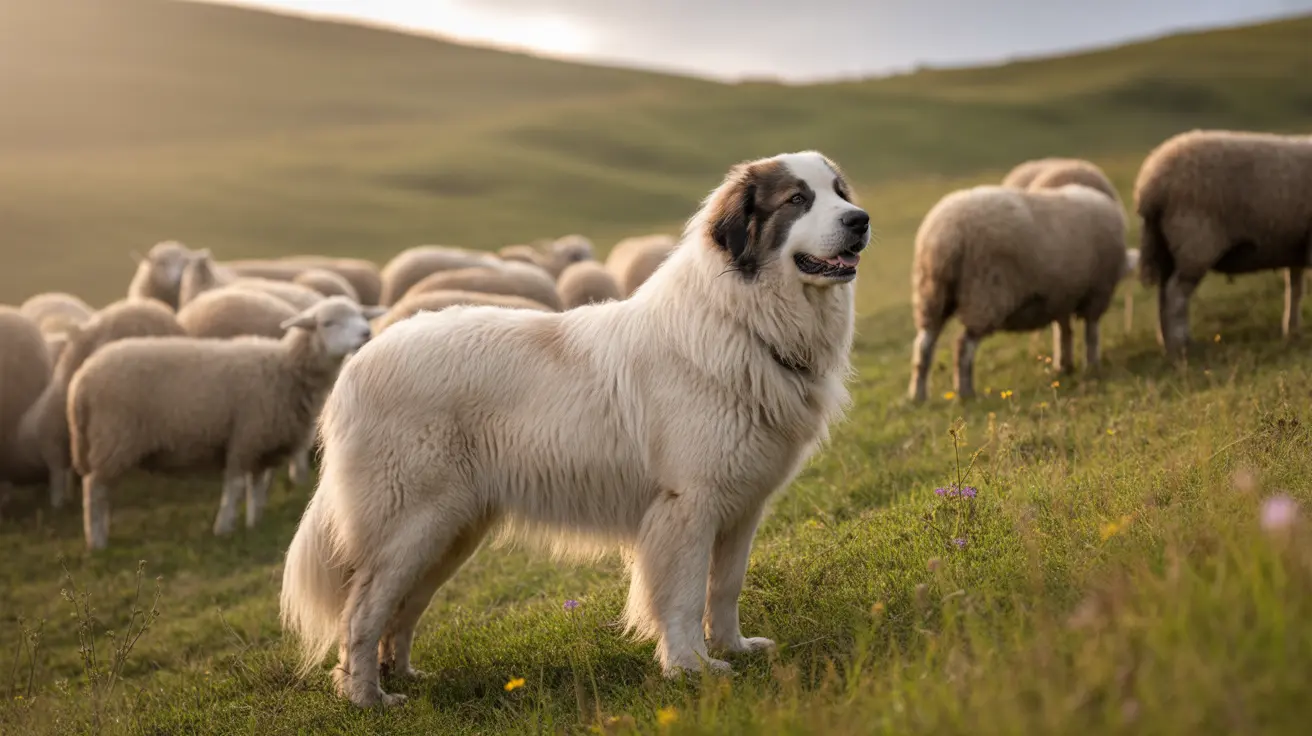The Great Pyrenees, a majestic livestock guardian breed, has long fascinated both dog enthusiasts and potential owners with its impressive physical capabilities. Among these capabilities, their bite force stands as a testament to their historical role as protectors against predators in mountainous regions.
In this comprehensive guide, we'll explore the true extent of the Great Pyrenees bite force, compare it to other breeds, and understand what these numbers mean for owners and caretakers. We'll also delve into the factors that influence their bite strength and discuss their natural temperament as guardians.
Understanding Great Pyrenees Bite Force
The Great Pyrenees typically exhibits a bite force ranging from 200 to 240 PSI (pounds per square inch). While some studies suggest higher numbers between 280-340 PSI, these figures place them in the moderate to strong category among large dog breeds.
This bite force serves as a crucial tool in their traditional role as livestock guardians, enabling them to effectively deter predators while maintaining control and precision in their defensive actions.
Comparing Bite Forces: Where Do Great Pyrenees Stand?
When compared to other breeds, the Great Pyrenees' bite force falls within the middle to upper range of domestic dogs. Their bite significantly exceeds the human bite force of 120-140 PSI but remains below specialized guardian breeds like the Kangal (743 PSI) or Cane Corso (700 PSI).
For context, here's how they compare to other common breeds:
- Average domestic dog: 235 PSI
- Rottweiler: 328 PSI
- German Shepherd: 238 PSI
- Great Pyrenees: 200-240 PSI (typical range)
Factors Influencing Bite Strength
Several key elements contribute to a Great Pyrenees' bite force:
Physical Characteristics
- Skull structure and size
- Jaw muscle development
- Overall body mass
- Age and health condition
Environmental Factors
- Training and socialization
- Diet and nutrition
- Exercise and jaw muscle conditioning
- Genetic inheritance
Temperament and Bite Risk Assessment
Despite their considerable bite force, Great Pyrenees are known for their gentle and patient nature. They typically display remarkable restraint and rarely use their full bite force unless facing genuine threats to their family or flock.
These dogs possess excellent judgment and typically follow an escalating series of warning signals before resorting to biting:
- Alert barking
- Positioning themselves between threat and family/flock
- Growling or showing teeth
- Defensive posturing
Safety and Training Considerations
To ensure safe management of these powerful dogs, owners should focus on:
- Early socialization with people and other animals
- Positive reinforcement training methods
- Understanding and respecting their guardian instincts
- Proper containment and secure fencing
- Regular exercise and mental stimulation
Frequently Asked Questions
How strong is the bite force of a Great Pyrenees compared to other dog breeds?
The Great Pyrenees has a moderate to strong bite force of 200-240 PSI, placing them in the middle range compared to other large breeds. While significant, it's less than specialized guardian breeds like the Kangal or Cane Corso.
What factors influence the bite force of a Great Pyrenees?
The bite force is influenced by physical characteristics such as skull structure, jaw muscle development, overall size, and health condition. Environmental factors like diet, exercise, and genetics also play important roles.
Why might a Great Pyrenees bite, and how can owners prevent biting incidents?
Great Pyrenees typically only bite when perceiving genuine threats to their family or livestock. Prevention involves proper socialization, positive training, understanding their guardian nature, and avoiding situations that might trigger protective responses.
Is the Great Pyrenees' bite force dangerous to humans and pets?
While their bite force is significant, Great Pyrenees are generally gentle and show excellent judgment in using their strength. With proper training and socialization, they pose minimal risk to humans and other pets.
How does the Great Pyrenees' protective nature relate to its bite strength?
Their bite force evolved as a defensive tool for protecting livestock from predators. This physical capability complements their natural protective instincts, allowing them to effectively guard while maintaining control in defensive situations.
Conclusion
While the Great Pyrenees possesses a formidable bite force, their true strength lies in their balanced temperament and intelligent use of their physical capabilities. Understanding these aspects helps owners better appreciate and manage these remarkable guardian dogs, ensuring they remain the gentle giants they're known to be while maintaining their effectiveness as protectors.






